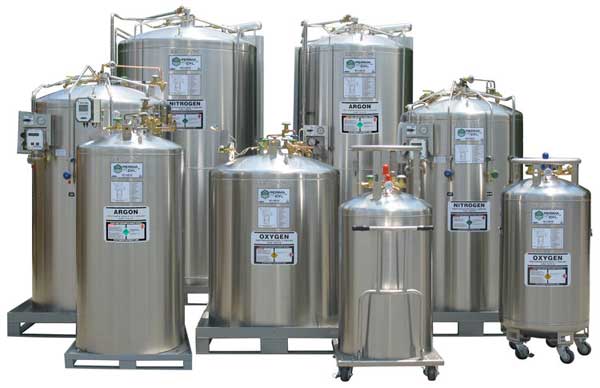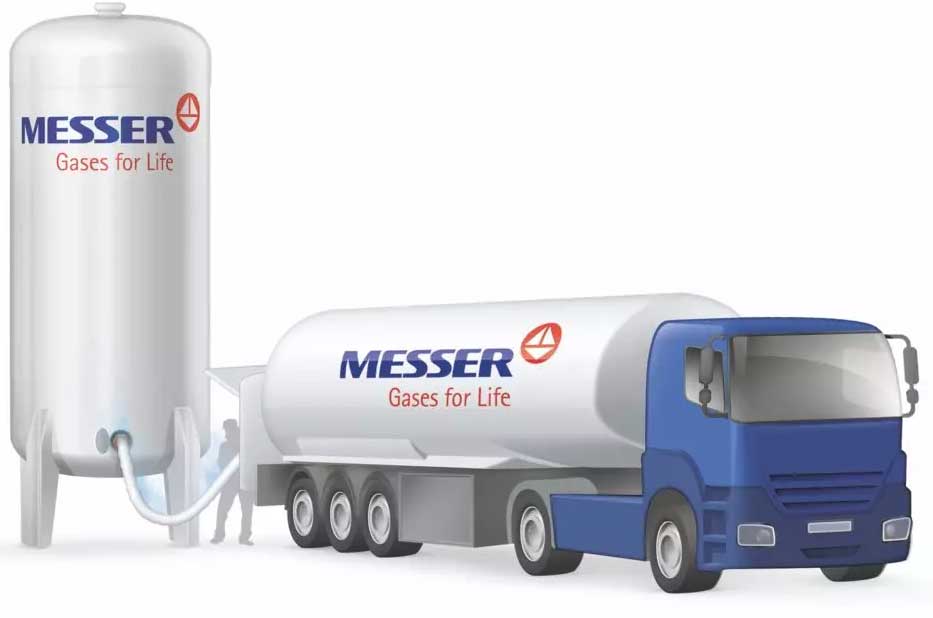The below article is from Air Products
Cryogenic liquid containers
Cryogenic liquid containers, also referred to as liquid cylinders, are double-walled vacuum vessels with multilayer insulation in the annular space
They are designed for the reliable and economic transportation and storage of liquefied gases at cryogenic temperatures, typically colder than -130°F (-90°C). There are two primary advantages of a liquid container. The first is that it contains a large volume of gas at a relatively low pressure compared to a compressed gas cylinder. The second is that it provides a source of cryogenic liquids which can be easily handled. Cryogenic liquid containers are often incorrectly referred to as dewars. Dewars are open, nonpressurized vessels for holding cryogenic liquids.
The cryogenic products normally found in liquid containers are liquid nitrogen (LIN), liquid argon (LAR), liquid oxygen (LOX), and liquid helium (LHE). Carbon dioxide and nitrous oxide are also available as refrigerated liquids in similar containers.
Although these containers are well insulated, heat will continuously leak into the product, due to the extremely large temperature difference between the cryogenic liquid and the ambient environment. The heat leak will cause some vaporization to occur. Vaporized product, if not used, will collect in the vapor space above the liquid and build pressure. This is referred to as head pressure. The head pressure will build in the container and periodically vent via the pressure relief valve. Vaporization rates will vary and may be as low as 0.4% or as high as 3% of the container’s volume per day. This is a normal and safe function of the container.
 Image.. www.gwsco.com
Image.. www.gwsco.com
General safety precautions
The potential hazards for handling cryogenic liquids, in addition to those observed for their respective gases, stem from two properties.. extremely cold temperature and the expansion ratio...
Related Post(s)

Cryogenic tanks are used for the storage of natural gases such as oxygen, argon, nitrogen, helium, hydrogen and other materials...